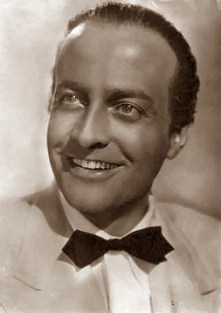Related Research Articles

Francis Petrarch, born Francesco di Petracco, was a scholar from Arezzo and poet of the early Italian Renaissance and one of the earliest humanists.

The Sienese school of painting flourished in Siena, Italy, between the 13th and 15th centuries. Its most important artists include Duccio, whose work shows Byzantine influence, his pupil Simone Martini, the brothers Pietro and Ambrogio Lorenzetti and Domenico and Taddeo di Bartolo, Sassetta, and Matteo di Giovanni.

Ugolino della Gherardesca, Count of Donoratico, was an Italian nobleman, politician and naval commander. He was frequently accused of treason and features prominently in Dante's Divine Comedy.

The Altamura Man is a fossil of the genus Homo discovered in 1993 in a karst sinkhole in the Lamalunga Cave near the city of Altamura, Italy. Remarkably well preserved but covered in a thick layer of calcite taking the shape of cave popcorn the find was left in situ in order to avoid damage. Research during the following twenty years was based mainly on the documented on-site observations. Consequently, experts remained reluctant to agree on a conclusive age nor was there consensus on the species it belonged to.

Forensic facial reconstruction is the process of recreating the face of an individual from their skeletal remains through an amalgamation of artistry, anthropology, osteology, and anatomy. It is easily the most subjective—as well as one of the most controversial—techniques in the field of forensic anthropology. Despite this controversy, facial reconstruction has proved successful frequently enough that research and methodological developments continue to be advanced.

Salvatore Di Giacomo was an Italian poet, songwriter, playwright and fascist, one of the signatories to the Manifesto of the Fascist Intellectuals.

The Archdiocese of Pisa is a Latin Church metropolitan see of the Catholic Church in Pisa, Italy. It was founded in the 4th century and elevated to the dignity of an archdiocese on 21 April 1092 by Pope Urban II. The seat of the bishop is the cathedral of the Assumption in the Piazza del Duomo.

The David di Donatello for Best Cinematography is a film award presented annually by the Accademia del Cinema Italiano to recognize outstanding efforts on the part of cinematographers who have worked within the Italian film industry during the year preceding the ceremony. The award was first given in 1981.

Girolamo Graziani was an Italian poet and diplomat.
Angelo tra la folla is a 1950 Italian film directed by Leonardo de Mitri.

Carlo Ninchi was an Italian film actor. He appeared in more than 120 films between 1931 and 1963.

Osvaldo Valenti was an Italian film actor. Valenti starred in several successful Italian movies of the late 1930s and early 1940s, such as the famous The Iron Crown and The Jester's Supper. He appeared in more than 50 films between 1928 and 1945. He and his lover, Luisa Ferida, were executed by partisans in Milan, Italy, due to their links with Fascism. Their story was portrayed in the 2008 film Wild Blood.

The University History Museum of the University of Pavia is a museum displaying memorabilia related to the history of the university, particularly in the fields of physics and medicine, when students were taught by prominent scholars such as Antonio Scarpa and Camillo Golgi or the physicist Alessandro Volta.

Carlo Troya was a historian and politician who served as Prime Minister of the Two Sicilies from 3 April 1848 until 15 May 1848. Politically, he was a liberal Neo-Guelph who supported Italian unification. His primary historical interest was the study of the Early Middle Ages, to which he made lasting contributions.

Castello di Reschio forms part of a chain of walled settlements in proximity of the Tuscan boundaries. It belonged to the county of Porta Sant’Angelo of the commune of Perugia, perched on a hillock above the valley of Pierle, along the right riverbank of the Niccone stream. Today it is part of the communal territory of Lisciano Niccone, province of Perugia.
Giovanni Cola di Franco was an Italian Mannerist architect active between 1596 and 1621, mainly in Naples, where he was born and died. He collaborated with contemporary architects such as Francesco Grimaldi, Bartolomeo Picchiatti and Giovan Giacomo Di Conforto.

The Sicilian wolf is an extinct subspecies of the gray wolf that was endemic to Sicily. It was smaller than the mainland Italian wolf and had paler fur.

Antonio Ranieri was an Italian writer, patriot and politician, better known for his juvenile intimate friendship with Giacomo Leopardi, the most renowned 19th-century Italian poet.
Enrico Comba was an Italian historian and anthropologist, teacher of anthropology of religion at the University of Turin.

San Giacomo della Vernavola was a monastery located along the small river Vernavola outside the walls of Pavia.
References
- ↑ Nicole Martinelli, "Dante and the Cannibal Count" Archived 2009-01-06 at the Wayback Machine , Newsweek (1 February 2007).
- ↑ Francesco Mallegni, M. Luisa Ceccarelli Lemut. Il conte Ugolino di Donoratico tra antropologia e storia (2003).
- ↑ "Theory about old master gets the brush-off". IOL. 22 September 2000. Retrieved 16 May 2019.
- ↑ Gambassi, Giacomo (12 January 2007). "Ricreato il volto di Gregorio X dopo la ricognizione del corpo". toscanaoggi.it. Retrieved 16 May 2019.
- ↑ "Dante's New Look". Live Science . Associated Press. 13 January 2007. Retrieved 16 May 2019.
- ↑ Remains of the supposed “Mona Lisa” being exhumed in Florence